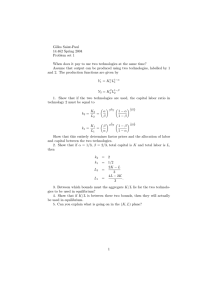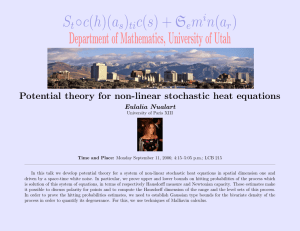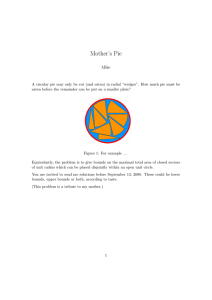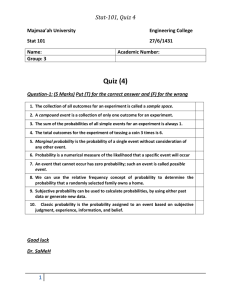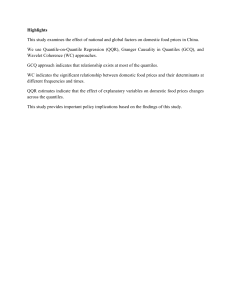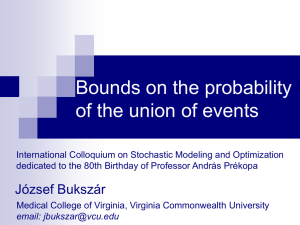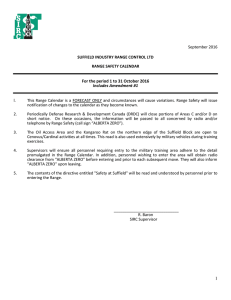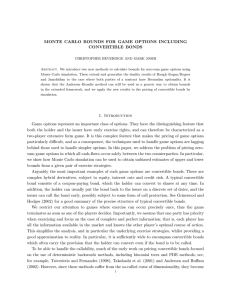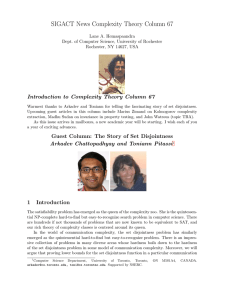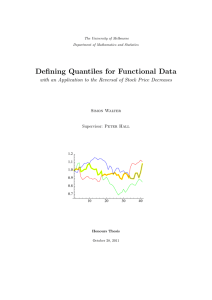Spring Quarter 2008 Course Announcement Industrial Statistics STAT 498B Instructor: Coverage
advertisement
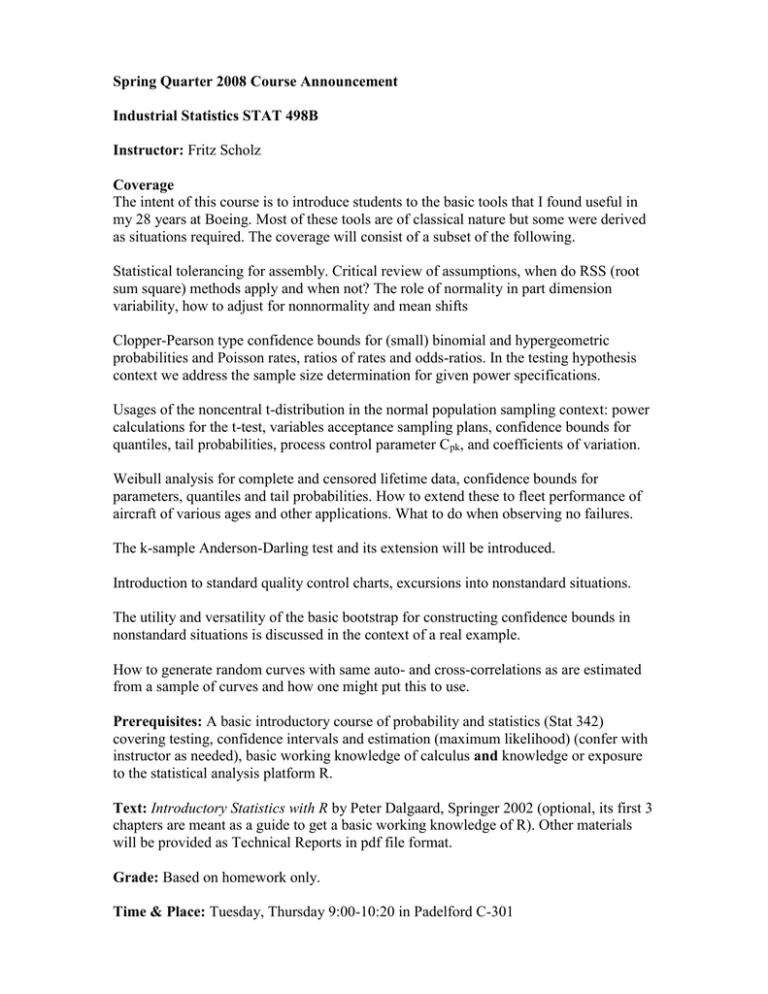
Spring Quarter 2008 Course Announcement Industrial Statistics STAT 498B Instructor: Fritz Scholz Coverage The intent of this course is to introduce students to the basic tools that I found useful in my 28 years at Boeing. Most of these tools are of classical nature but some were derived as situations required. The coverage will consist of a subset of the following. Statistical tolerancing for assembly. Critical review of assumptions, when do RSS (root sum square) methods apply and when not? The role of normality in part dimension variability, how to adjust for nonnormality and mean shifts Clopper-Pearson type confidence bounds for (small) binomial and hypergeometric probabilities and Poisson rates, ratios of rates and odds-ratios. In the testing hypothesis context we address the sample size determination for given power specifications. Usages of the noncentral t-distribution in the normal population sampling context: power calculations for the t-test, variables acceptance sampling plans, confidence bounds for quantiles, tail probabilities, process control parameter Cpk, and coefficients of variation. Weibull analysis for complete and censored lifetime data, confidence bounds for parameters, quantiles and tail probabilities. How to extend these to fleet performance of aircraft of various ages and other applications. What to do when observing no failures. The k-sample Anderson-Darling test and its extension will be introduced. Introduction to standard quality control charts, excursions into nonstandard situations. The utility and versatility of the basic bootstrap for constructing confidence bounds in nonstandard situations is discussed in the context of a real example. How to generate random curves with same auto- and cross-correlations as are estimated from a sample of curves and how one might put this to use. Prerequisites: A basic introductory course of probability and statistics (Stat 342) covering testing, confidence intervals and estimation (maximum likelihood) (confer with instructor as needed), basic working knowledge of calculus and knowledge or exposure to the statistical analysis platform R. Text: Introductory Statistics with R by Peter Dalgaard, Springer 2002 (optional, its first 3 chapters are meant as a guide to get a basic working knowledge of R). Other materials will be provided as Technical Reports in pdf file format. Grade: Based on homework only. Time & Place: Tuesday, Thursday 9:00-10:20 in Padelford C-301

